Badrinath is one of the most important sites of the Char Dhams in the northern state of Uttarakhand in India.This place is beautifully set in the backdrop of the colossal Neelkanth mountain peak and on the banks of river Alaknanda at an elevation of 3313 m.The term Badrinath is a derivative of Badri, which means the place where berries grow abundantly. Renowned for the holy shrine of Lord Badri, the holy abode of Lord Vishnu is liked by all for its effervescent spirituality and loveliness. The twisting Alaknanda river and the copious dazzling waterfalls augments the compelling splendor of the adjoining nature. This holy city is an ideal location for those who want to be in serene environment.
How to reach here:
By Air: The nearest airport is Jolly Grant Airport of Dehradun which is 317 Kms away.
By Rail: The nearest railway station is Kotdwar station which is 297 Kms from Badrinath.
Best time to visit: June to September
Languages spoken: Hindi and Garhwali
Must eat: Satvik pure vegetarian food
Famous Restaurants: Limited options
Places you must visit:
Badrinath Temple was built by Adiguru Shankaracharya in the 8th century. The temple is dedicated to Lord Vishnu sculpted in black stone, which is one meter high and has a meditative pose. This temple is located on the banks of the holy river Alaknanda. The colorful Singh-Dwara at the entrance is very artistic creation. This temple is divided into three sections that are sanctum sanctorum or garbha griha, sabha mandap where devotees assemble and darshan mandap where prayers and rituals are conducted. This temple has 15 idols of other Hindu Gods.
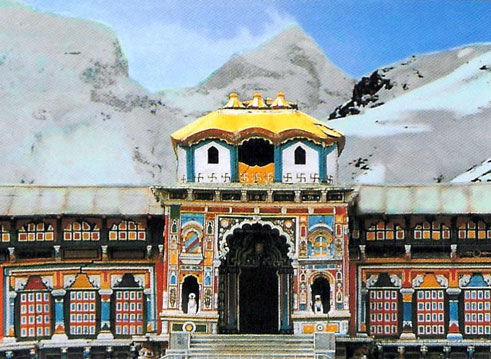
Tapt Kund is the abode of Lord Agni and is famous for its medicinal properties. It is a natural thermal spring with the temperature of water around 45 degrees celcius. It is believed that the holy dip in this kund helps devotees relieve from their sinful deeds and thoughts.

Narada Kund is another hot water spring situated near Tapt Kund. It is the place where the idol of Lord Vishnu was recover by Adi Shankaracharya . It is named after the saint Narada muni who wrote Narada Bhakti sutra at this place. Narada Kund, a recess in the Alaknanda river , is covered by a rock, which prevents the flow of water.

Neelkanth peak is named after Lord Shiva. It is also known as 'Garhwal Queen'. It's snowy peak shaped like a pyramid forms the background of Badrinath. This peak is encompassed on either side of the temples of Nar and Narayan. These two mountaain ranges are just on the banks of river Alaknanda. This peak is situated at an average elevation of around 6597 meters above sea level. Neelkanth is the site where sun casts its first rays.

Yogdhyan Badri is situated 13Kms from Badrinath at Padukeshwar near Govind Ghat. It is an ancient temple of Lord Vishnu. It is believed that Pandu, the father of Pandavas meditated at this place so that Lord Vishnu can cleanse him for his sins of killing two mating deer. the Pandavas were born at this same place and Pandu died at this place too. It is believed that Pandu had installed an idol of Lord Vishnu in Yogdhyan (meditative) pose, hence the name Yog Dhyan Badri. this idol is carved from Shaligram stone which imparts a beautiful look.
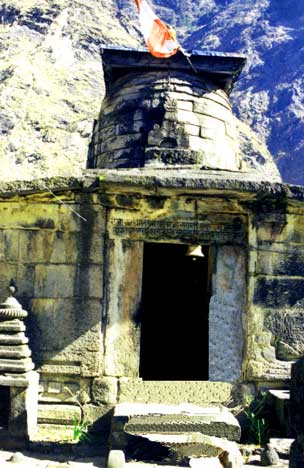
Mata Murti temple is dedicated to the mother of Lord Nar and Narayan. According to mythology, Mata Murti prayed Lord Vishnu to take his next avatar by coming out from her womb.Lord Vishnu happily agreed and came into this world as twins, Nar and Narayan to kill a monster.
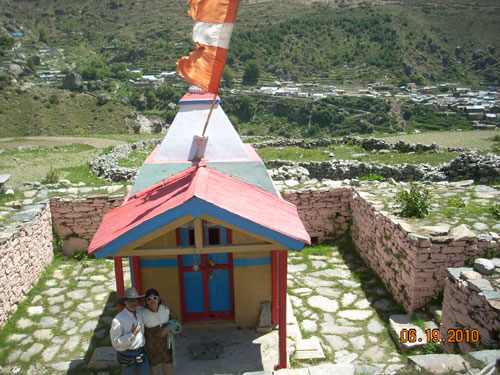
Charanpaduka is a beautiful rock which holds the foot prints of Lord Vishnu.It is said that when Lord Vishnu descended from Vaikunth he stepped on this boulder. It is at an height of 3380 feet and beholds enchanting serenity and beauty.It is believed that the holy darshan of Lord's footprints would retrieve all the ailments and troubles of the devotees.

Alka Puri is located in Chamoli district and is situated 15 Kms from Badrinath. It is believed to be the home of Yakshas, Gandharvas and Kuber. It is the place from where Alaknanda river originated from the Satopanth glacier and glacier snouts of Bhagirath- Kharak.
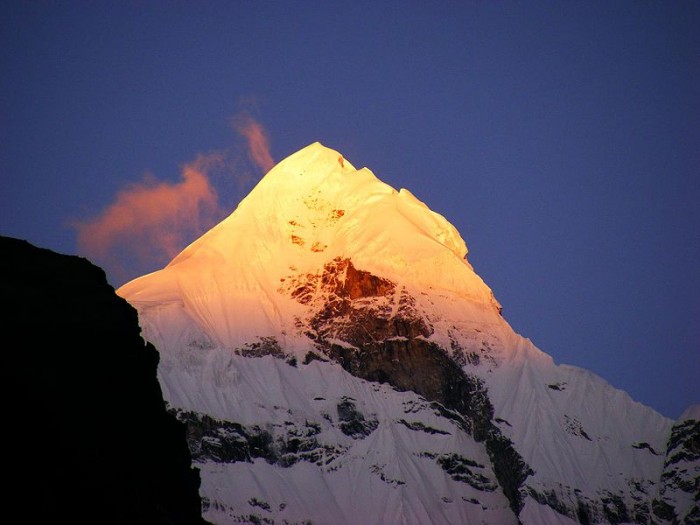
Mana village situated at a distance of 4Kms from Badrinath and inhibited by Indo-Mongolian tribe known as Bhotias is the last village of India and is located at the Tibetan border. It is famous for its Vyas Gufa, Vasundhara waterfalls and Bheem Pul.

Vyas Gufa or Vyas cave is the place where Ved Vyas dictated entire Mahabharata to Lord Ganesha so that he could write. Ved Vyas also meditated here.

Ganesh Cave is the natural cave where Lord Ganesha wrote the Mahabharata as dictated by Ved Vyas.
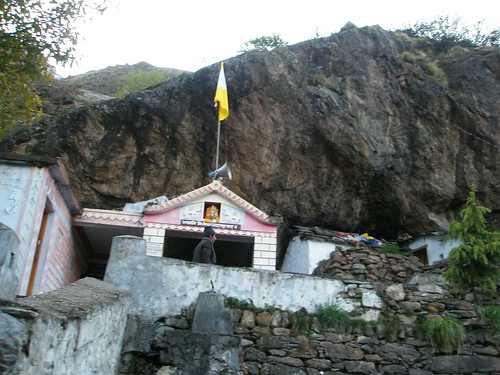
Vasundhara falls are surrounded by beautiful mountain peaks and are situated in the Mana village. The water of this cascading falls flows down from the height of 400 ft and is situated at an altitude of 12000 ft. It is believed that the water of these falls turns awy from the people who are not pure at heart. From a distance, the water from these falls seems to be like milk flowing down the mountain.

Bheem Pul is a huge rock which acts as a natural bridge across the Saraswati river. The Saraswati river flows with force between the two mountains and joins the Alaknanda river. It is believed that Bheem, one of the five Pandavas , threw a huge rock in order to make a path to join the two mountains so that Draupadi could easily walk over it.
Sheshnetra is a large stone which is marked with an eye of a legendary snake situated at a distance of 1.5 Kms from Badrinath. It is said that Lord Vishnu took retreat on a gigantic snake named Ananta Shesha. This sacred site has the natural imprints on the rock. It is also believed that Sheshnetra guards the temple of Lord Badrinath.
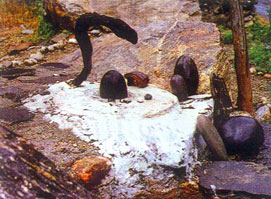
Satopanth is a triangular lake with three corners spread within the circumference of about one Kilometer. This lake is situated 4402 meters above sea level. This lake is surrounded by snow covered peaks and is named after the Gods Mahesh, Vishnu and Brahma. It is believed that these Gods occupy one corner each of this lake.
Brahma Kapal Ghat is a flat platform on the banks of river Alaknanda , where Lord Brahma is believed to reside. Hindus perform propitiating rites for their deceased ancestors. It is also believed that Brahma's head had fallen off from Shiva's Trident with the blessings of Lord Vishnu here at Brahma Kapal.

No comments:
Post a Comment